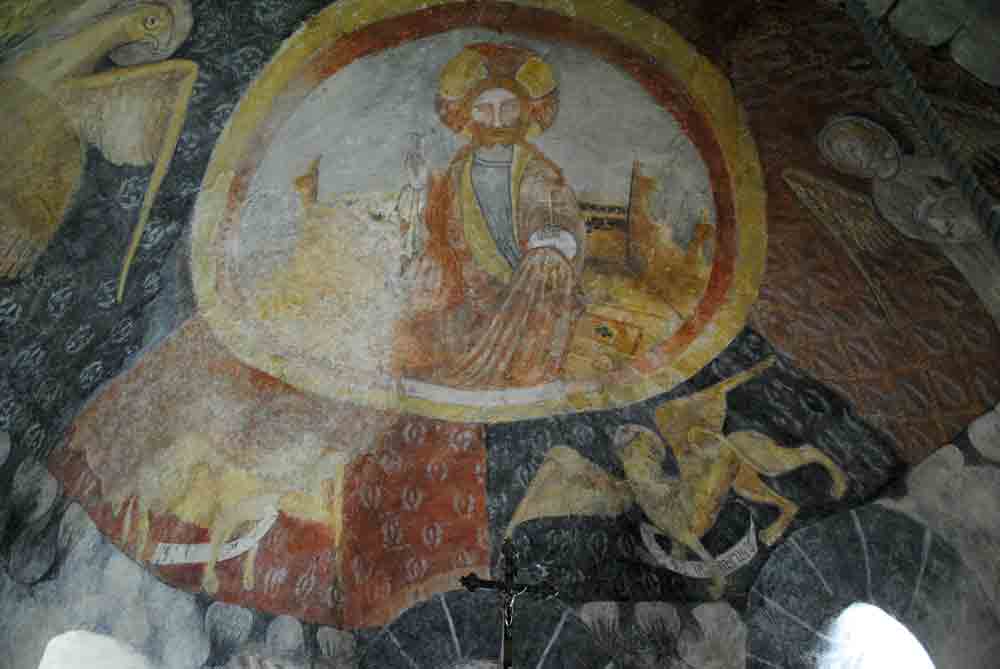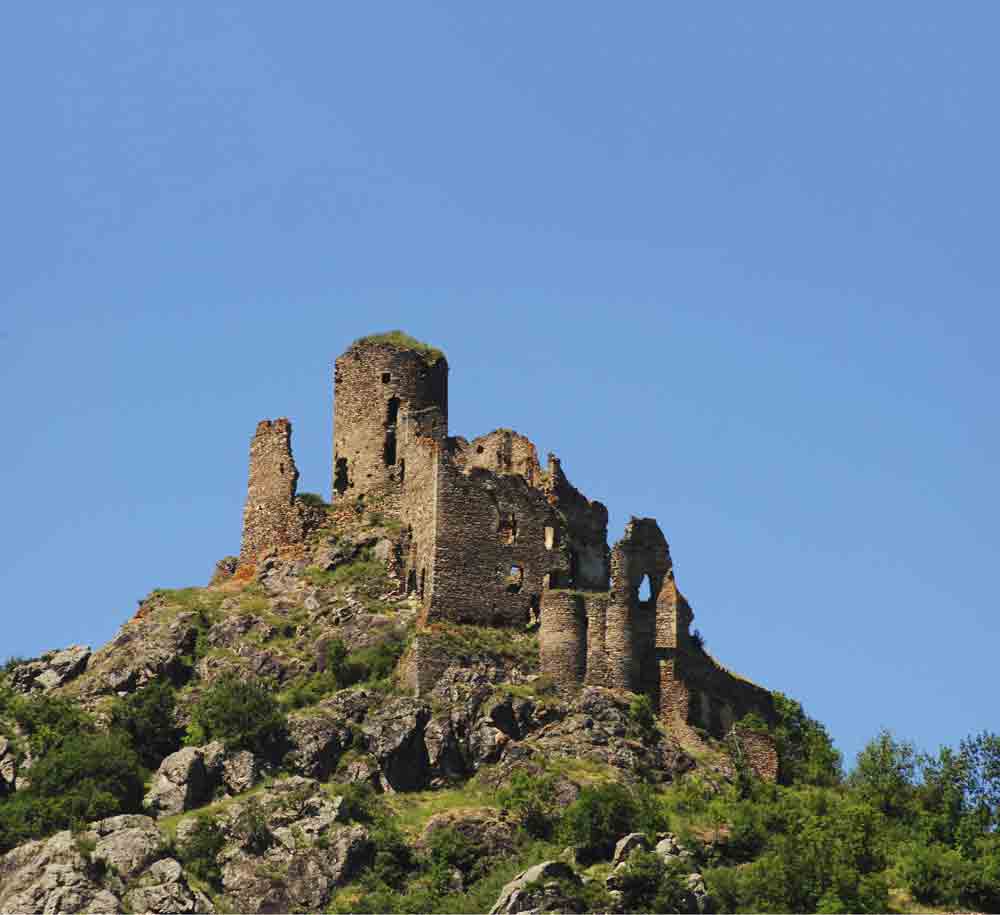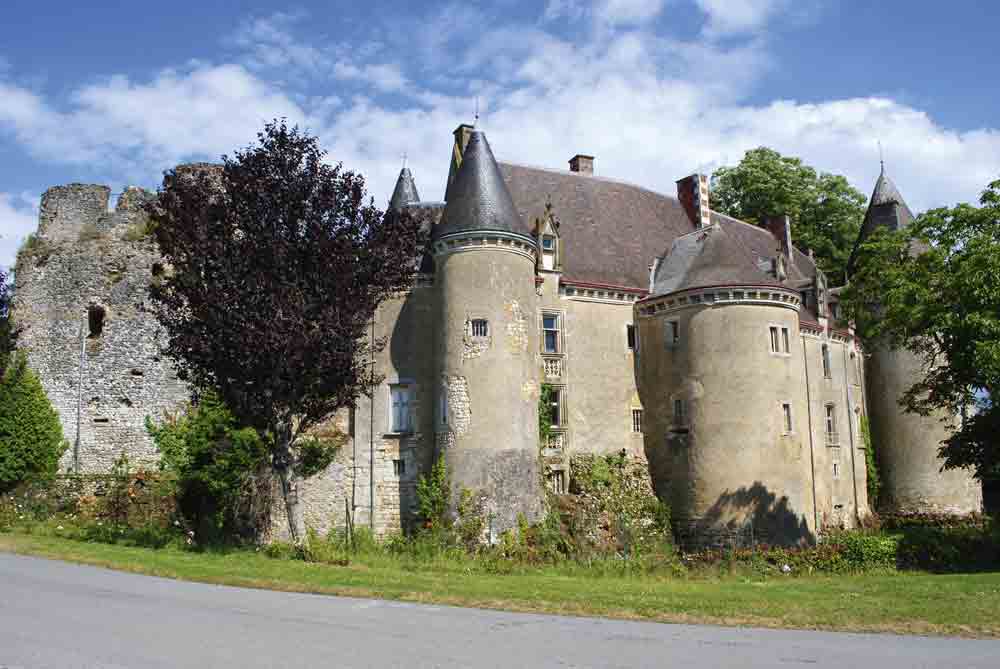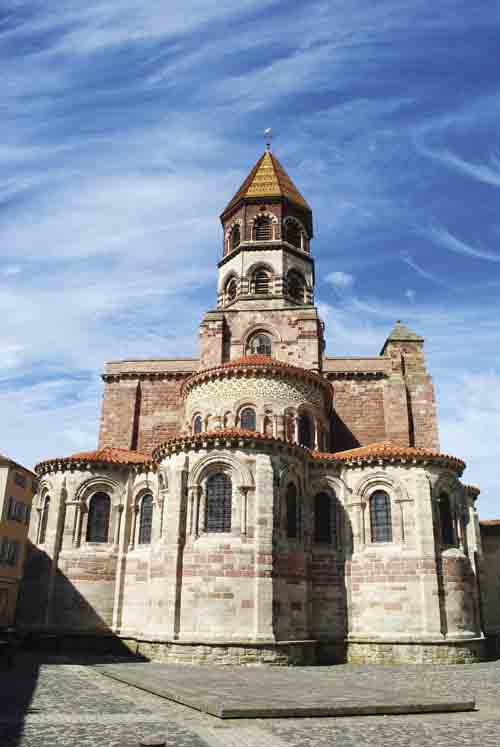Motorhome travel: Off the beaten track in France
Words and photos by Terry Brown
We arrived at Blesle more or less by accident. Having crossed the Channel from Portsmouth-Ouistreham, we’d spent the first night in the flower-bedecked campsite at Vimoutiers and the second at Lignières, while heading roughly to the countryside east of the Cantal. We knew that Blesle (Haute-Loire) had a two-star municipal site, so we thought we’d try it. What a find it turned out to be!
Set by the river in a valley, with forested hillsides rising on both sides, there’s plenty of shade. A steep path led us over the ridge, which separates the site from this village of at least a dozen medieval towers. Along the way were far-stretching views across this sparsely populated land.
As soon as we reached the top we could see Blesle at the foot of the next valley. Blesle is one of the most beautiful villages of France. It’s still undiscovered by tourists and, because of its isolated position, hasn’t been developed. It remains a charming relic of the past.
We crossed the stream and made for the Place de la Mairie in front of the old abbey church. Here is a small alimentation and a café/bar (Bar de la Tour). If I tell you that a hot chocolate and a coffee together cost only €2.80 (£2.49) you will understand that Blesle doesn’t exploit visitors.
Narrow streets fan out from the centre. One leads past the clock tower of the former church to the Tour de Mercoeur, the formidable square keep of the old château-fort. Another leads past half-timbered houses with sculptured doorways to the tree-shaded boulevard, which curves its way outside the twelfth-fourteenth century town walls. There are four ivy-covered towers in this remaining stretch of the walls. In the hillside above is Tour du Massadou, now converted into a private residence.
Carry on past the old abbey buildings and you eventually reach the former hospital, now a museum of bonnets. Apparently, local villages all had their individual designs; not as elaborate as the Brittany coiffes, but very attractive. One room houses a temporary exhibition which, when we visited, was about the poilus (ordinary soldiers) of WWI.
Continue to the stream, crossed by several bridges and soon you see an elaborate cadran solaire (sundial) on the side of a house, dating from 1827.
An inscription, rather unnervingly, exhorts those innocently looking up to check the time to think of death and prepare themselves!
Blesle began with the founding of a Benedictine monastery for women in the ninth century. This grew and became the abbey. Prosperous times followed and Blesle became known as the ‘Bonne Ville d’Auvergne’.
High above the village, on a table of basalt, is Chadecol where man has lived since Neolithic times. An extraordinary wall, 350m (1,148ft) long and rough heaps of stones – evidence of early shelters – are all that now remains. These shelters were used during the annual transhumance in past times and one has been rebuilt to show how it used to be.
Nearby Bousselargues is a tiny village with a Romanesque church. This was locked when we arrived but a helpful man came out, unlocked it for us and told us all about the superb paintings inside which date from the fourteenth and fifteenth centuries.

One day we walked up the Alagnon valley, beside the river. High above its tree-lined slopes were the tortured rocks, evidence of volcanic activity in the past.
On another day, we drove upstream to come across the massive ruins of the Château de Léotoing towering over a little village. These ruins are dangerous and so have to be admired from outside. Just across the river is the handsome Château de Torsiac, built by the Templars. Original parts still exist, but are mostly hidden by sixteenth century walls and towers.

Less than 13 miles to the east is Brioude, with the largest Romanesque church in Auvergne. It is an amazing building, which dominates the town centre. We visited on a Sunday and there was some sort of fête going on with a band and a procession of children, all dressed in colourful costumes.
We spent longer than originally intended at Blesle and so, instead of heading further south as planned, we drove northwest to Messeix. Why? Well, Messeix isn’t far from Herment where we hoped to see one of the trees planted by the Duke of Sully to celebrate the Edict of Nantes. But we also wanted to stay on a ‘rare’ campsite – a Municipal Aire Naturelle.
This turned out to be nowhere near the town, but in the depths of the country, on the bank of the Dordogne. Perfect for fishermen, but not a lot more to do.
We stayed for one very peaceful (and cheap) night and then drove up to Neuvy-Saint-Sépulchre, which is on the edge of George Sand and the Vallée Noire country.
To the west is the holiday home of author, George Sand, at Gargilesse-Dampierre, but much closer is the little town of Cluis, notable for three things. The first is on the edge; the splendid ruins of the Forteresse de Cluis-Dessous, freely open for visitors to explore. The second is the beautiful restored market hall in the centre of town. The third is a railway viaduct of 20 arches, 500m (1,640ft) long and 42m (138ft) high. It is now a spectacular walking path.
Our base of Neuvy-Saint-Sépulchre is an ordinary little town with an extraordinary church. This is the basilica that is completely round – except for the unfortunate later additions. The round church was built in the twelfth century, a copy of the Saint-Sépulchre in Jerusalem. It has been rather over-restored, but the original Romanesque architecture makes this a very impressive building.
Also, inevitably, it meant that Neuvy is on one of the pilgrimage routes to Santiago and there are brass scallop shells set into the pavements.
We had visited this area before and so did not intend to tour all the George Sand sites. But, there were three in our plans.

The first was the beautiful little village of Lys-St-Georges, dominated by its château, mainly fifteenth century but including a crumbling twelfth century keep. Just along the road, in the former château gardener’s cottage, is a charming and tiny museum (open afternoons in July and August, Wednesday to Sunday).
It’s just two rooms and two local ladies welcomed us in (no charge). The cottage is furnished as it might have been at the end of the nineteenth century; a typical Berrichon peasant dwelling. A balisaged walk took us around the village and past the former leper hospital, now a private house.
We had both read George Sand’s The Miller of Angibault and wanted to see the watermill for ourselves. It was difficult to find – down narrow, winding roads and with few signposts; not good for marital relations! Nowadays it’s a sort of family centre, with a museum (closed during our visit), café, shop and walking trails.
Lastly, we visited the house of Amantine Lucille Aurore Dupin (George Sand was her nom de plume) in Nohant, which, in the past, we had seen only from the outside. I have a lot of admiration for the writer. She was notorious for her free lifestyle, well ahead of her time. But she was also extremely solicitous in caring for the less well-off and was known as ‘la bonne dame de Nohant’.
The house is still furnished and remains as it was in her lifetime. Notices forbid photography, but visitors were clicking away regardless. There are two theatres, both in the same room. Face one way and you see a human-sized stage. Turn 90 degrees and you see a puppet theatre.
The most impressive room is the dining room, set out with places for the writer’s famous friends: Chopin, Delacroix, Flaubert and so on. The room where Chopin used to compose has a padded door to dampen the sound of his piano-playing. George, it is said, used to enjoy hearing Chopin as she went about her work. Upstairs is George’s bedroom, where she died in 1876.
I don’t much care for guided tours, but it was a joy to wander round George’s garden, now officially a ‘Jardin Remarquable’ of France. The exhibition of puppets made by her son was a bonus, too.

As this is the centre of France, we planned one more stop before making for the Channel.
We chose Le Loir; La Loire’s little brother to the north. We had often stopped here in the past on one of the charming little campsites alongside the river.
This time we went back to Thoré-la-Rochette. There is a retro diesel train that runs from here in the summer, taking passengers downriver, through the Saint-Rimay tunnel to Montoire station (where Hitler met Pétain and carved up France in WWII) and on to the troglodyte city of Trôo. It’s a fascinating journey, full of recent historical interest.
The campsite is in a charming spot right by the river and we anticipated a peaceful couple of days here. The beautiful village of Lavardin (about eight miles from the site) – claims to be the most ‘French’ of all villages – and the lovely towns of Montoire-sur-le-Loir and Vendôme.
It was a hot, sunny day when we drove to the nearby garden of Plessis Sasnières and the garden was at its best. When everywhere else seemed to be parched and dry, here the lawns were as perfect as greens on a golf course. We wondered how the gardeners managed this. In fact, a small stream runs through the estate and pipes running from it water the garden.
This is another Jardin Remarquable of France and was created under the direction of Rosamée Henrion, the owner since 1960, who was strongly influenced by English gardens. Three trails have been planned to lead visitors around the lake, past the small château and ice house, vegetable garden and formal garden, all brilliant with colour. It was a very satisfying visit to a beautifully planned and maintained garden, which takes no shortcuts with chemicals.
Our visit to the château of Rochambeau was not the usual château visit. It has limited visiting hours; you ring the bell at the gate and walk in. The château – in the same family since 1516 – is private, but you can enter the semi-troglodyte chapel. The Maréchal de Rochambeau, the first owner, distinguished himself in the American War of Independence and the current owner likes to tell visitors the full story of his famous ancestor.
Later, we relished one of the great joys of camping on a hot summer day. That of lying back in the shade and watching the ever-changing patterns of sun-drenched leaves against the perfect blue of the sky.
This article was originally published in the July 2019 issue of MMM. Click here to buy a digital edition of the magazine.








Recent Updates
Engine management lights: all you need to know
What is the engine management light? What does it mean, and what do I have to do? ...
Motorhome air suspension: all you need to know
Motorhomes are heavy and the additional weight of equipment and height of the bodywork can increase the loads ...
Motorhome WiFi: how to get better motorhome internet
Staying connected on the move is more and more essential, so relying on campsite WiFi isn't an option – here ...
A class of their own - our guide to A-class motorhomes
Thinking of trading up to an A-class, or even going straight to the top of the motorhome tree? We guide you ...
Explore overseas on a motorhome dream tour
Enjoy exotic travel in a campervan or motorhome by hiring, swapping with someone else or exporting your ...
Motorhome water systems: everything you need to know
On-board water is an important part of every motorhome – here’s everything you need to know ...
Campervanning in Europe: what you need to know
Whether you're planning a leisurely drive through the French countryside, navigating bustling city streets in ...
Campervan security: all you need to know
With thefts on the increase, it’s important to know how to keep your campervan secure and prevent campervan ...
Campervan furniture: everything you need to know
Our campervan experts guide you through all the essentials for your campervan, including tables, chairs, ...
Campervan finance: how to fund your purchase
Here we look at the different types of campervan finance available, to help you decide what’s the best option ...
Other Articles
Britain’s best used motorhomes
Want a great motorhome without paying the premium for a new one? Here's a guide to the best you can get in the pre-owned market for each layout, ...
Which motorhome? Choosing the perfect motorhome for you
Choosing a motorhome or campervan is one of the biggest buying decisions you’ll ever make, so it's important ...
Campervan washroom essentials: stay fresh on the road
Our guide will take you through the campervan washroom essentials you'll need so you're well-prepared for ...
Dogs in campervans: all you need to know
Follow our advice and your dog will enjoy campervanning as much as you do ...
Electric campervans: all you need to know
Our guide will take you through everything you need to know about electric campervans and what the future ...
Motorhome electrics: a complete guide to your motorhome electrical set-up
Motorhome electrics can dramatically enhance the convenience and comfort of your vehicle – but they can be ...
Lighting for campervans: all you need to know
We guide you through all the lighting options available for you and your campervan, including interior ...
Electric bikes for motorhomes: our ultimate guide
Read our comprehensive guide to electric bikes for motorhome owners, helping you add electric power to your ...
Our guide to 'cheap' motorhomes in 2024
If you're on the hunt for an affordable new motorhome, this is the best place to start – we've rounded up a ...
Campervans in winter: all you need to know
Here's your guide to preparing your campervan for the colder months, whether you will be using it or putting ...